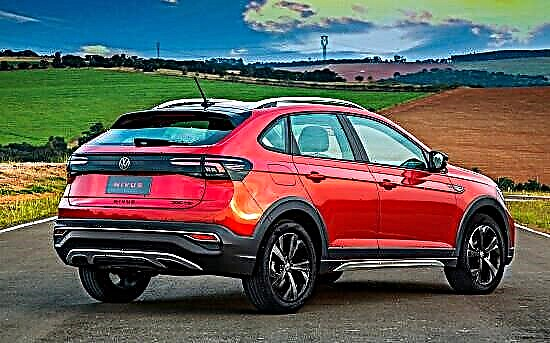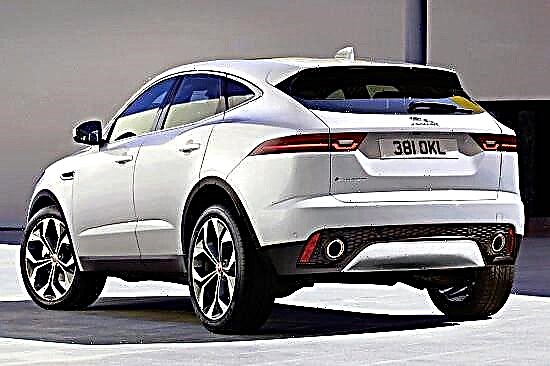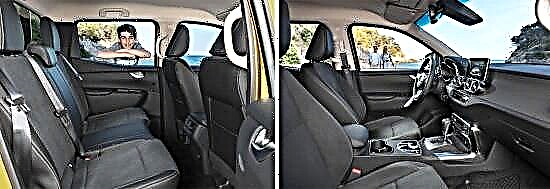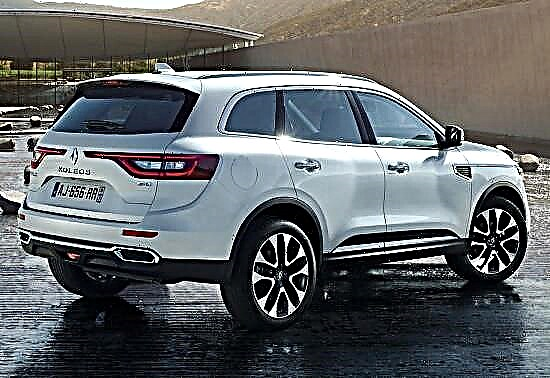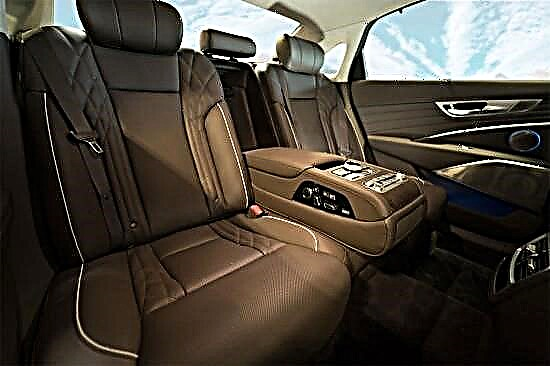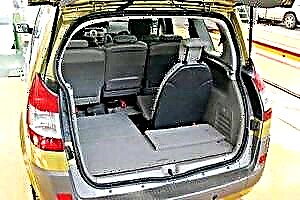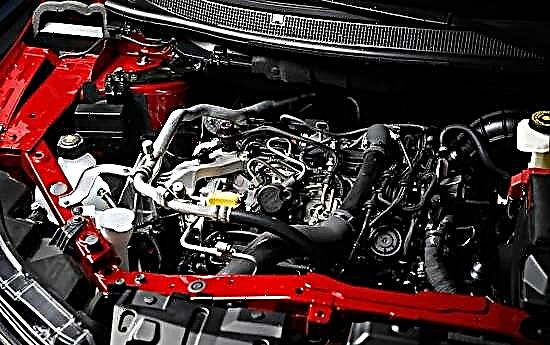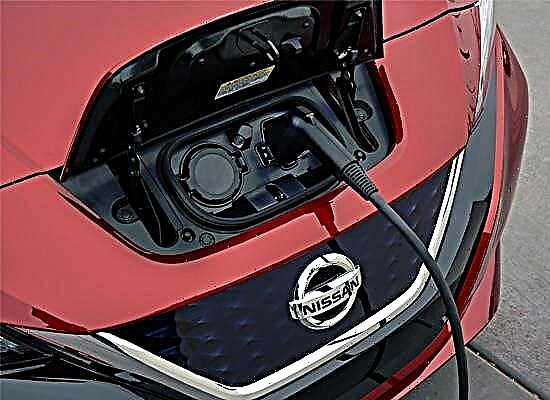Nissan Leaf is a front-wheel drive five-door hatchback with electric traction and the most popular car of this format in the world (having a "global focus"), which is intended primarily for residents of megacities ... It boasts an aggressive design, functional interior and high-tech "stuffing" ...

The world premiere of the second incarnation of the electric car, designed to consolidate the leading position of the Japanese manufacturer in the creation of "green cars" with zero emissions, took place on September 6, 2017, simultaneously in two cities - Tokyo and Los Angeles.
With the "change of generations" the five-door has become more expressive in appearance, has acquired a new interior and received a "smart filling", created with the support of Google and Apple.
The “second” Nissan Leaf looks attractive, expressive, dynamic and aggressive, and its design fully corresponds to the current design styling of the Japanese brand.
In front, the electric car flaunts the predatory look of lighting technology, a V-shaped radiator grille with lines radiating from it through the hood, and a raised bumper, and at the back it attracts attention with dashing strokes of lights, a half black trunk lid and a "puffy" bumper with a pseudo-diffuser.

In profile, the five-door demonstrates energetic and well-formed outlines, the attractiveness of which is added by the roof sloping down to the stern, the billowing line of the "sill", darkened pillars in the upper part, giving the roof a "floating" effect, and visual sidewalls with correct cutouts of the wheel arches.

The dimensions of the second-generation "Leaf" do not go beyond the "golf" -class according to the European classification: 4480 mm in length, 1790 mm in width and 1540 mm in height. The hatchback has a wheelbase of 2,700 mm and a ground clearance of 150 mm.
In the equipped form, the electric car weighs 1535 kg, and its gross weight varies from 1765 to 1795 kg, depending on the version.

The interior of the Nissan Leaf is decorated without a twist, although it is not devoid of interesting design solutions - a stylish instrument cluster, which includes an analog speedometer and a large display for other information, a raised multi-steering wheel with a rim sawn at the bottom and an unusual transmission selector.
On the traditional center console there is a 7-inch screen of the multimedia complex and an interesting-looking air conditioning unit.
The interior of the electric car is made of pleasant finishing materials, and as an option it can be offered in several types of colors.

The hatchback's "apartments" are for five people. At the front, there are ergonomic seats with noticeable lateral support bolsters, optimal padding density and wide adjustment intervals.

At the back is a full-fledged three-seater sofa that boasts a welcoming profile.

The volume of the cargo compartment of the "Leaf" of the second incarnation quite meets the requirements of the C-class - 435 liters in the standard position (although these figures can be reduced by installing a double floor with an organizer or a Bose acoustics amplifier). The second row of seats folds in two unequal sections, increasing the capacity of the trunk, but in this case, a huge "step" into the cabin is formed.
The "second" Nissan Leaf is powered by a three-phase AC synchronous electric motor that generates a maximum of 150 horsepower (110 kW) at 3283-9795 rpm and 320 Nm of torque, available from 0 to 3283 rpm.
The entire power reserve is "transmitted" to the wheels of the front axle by means of a single-stage gearbox, and the power plant is "powered" by traction lithium-ion batteries with a capacity of 40 kW * h.

Maximum "Leaf" is capable of accelerating to 144 km / h, and rushes to the first "hundred" in an impressive 7.9 seconds.
The passport "range" of the car on one charge depends on the cycle of movement: in the Japanese JC08 - 400 km, in the European NEDC - 378 km, in the American EPA - 241 km.
The “saturation” of the batteries from a conventional network in a hatchback takes 8-16 hours (the result is influenced by the type of outlet - alternating or direct current), and from a fast charging station - 40 minutes (up to 80%).

At the heart of the 2018 Nissan Leaf is the Nissan EV front-wheel-drive platform with a body structure that has seen widespread use of high-strength steels. On the front axle of the electric vehicle, an independent suspension of the MacPherson type is involved, and on the rear there is a semi-independent architecture with a torsion beam (in both cases, with anti-roll bars).
On the five-door, electric power steering and a braking system with ventilated discs on all wheels, ABS and EBD are used.
The second-generation "Leaf" boasts a number of interesting "chips", and one of them is the ProPilot complex with an adaptive "cruise", which reduces the load on the driver on a long journey. He is able to control the "Japanese" within the lane (at speeds from 30 to 144 km / h) - the electronics independently, if necessary, steer, brakes (up to full deceleration and even in emergency mode) and accelerates the hatchback. However, if the car in front has stopped for more than three seconds, then to activate ProPilot, you will need to touch the gas pedal. In addition, it includes the ProPilot Park system - a full-fledged autonomous valet who can park the car perpendicularly, parallel and diagonally (both in front and in reverse).
In Japan, the Nissan Leaf of the second incarnation will go on sale in January 2017, and will only reach the United States and the countries of the Old World in January 2018 (in the foreseeable future, it should “reach” the Russian market). At home, the electric car is estimated at $ 29,000, and in America - from $ 29,990 (~ 1.66 and 1.71 million rubles at the current exchange rate, respectively).
By default, the five-door is equipped with: front and side airbags, ABS, ESP, EBD, LED headlights and lamps, multimedia system, climate, ProPilot complex, multifunction steering wheel, heated front seats, power windows for all doors and other modern gadgets.

